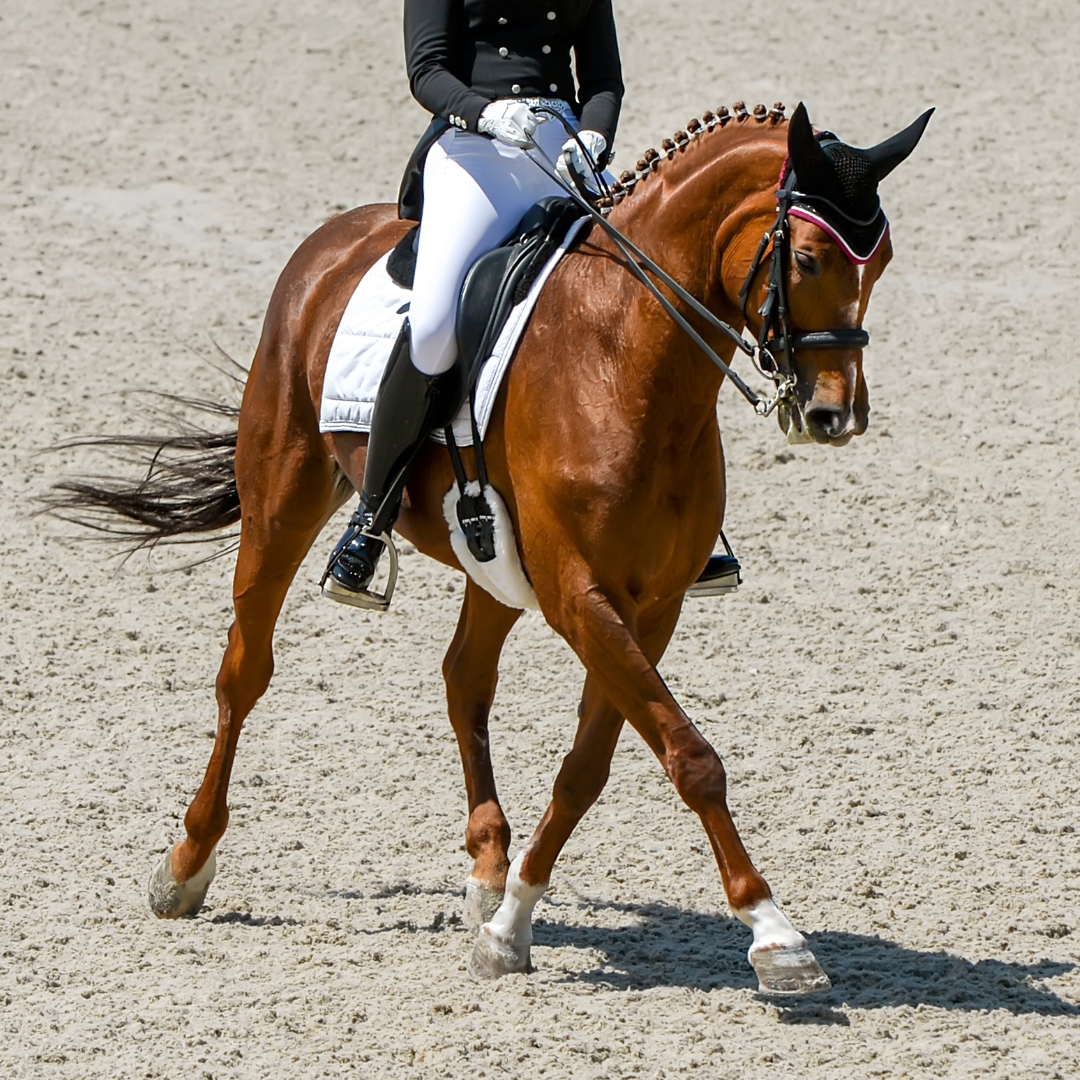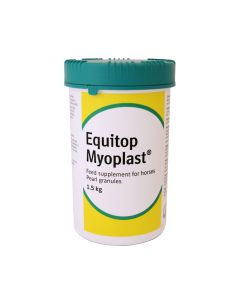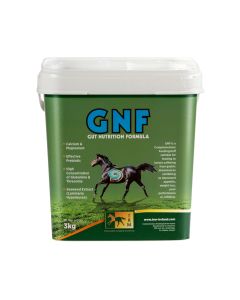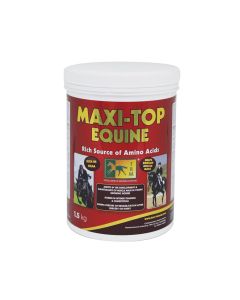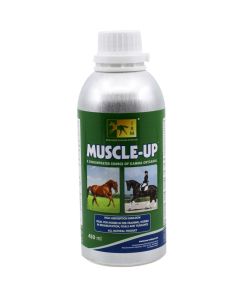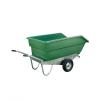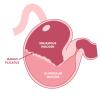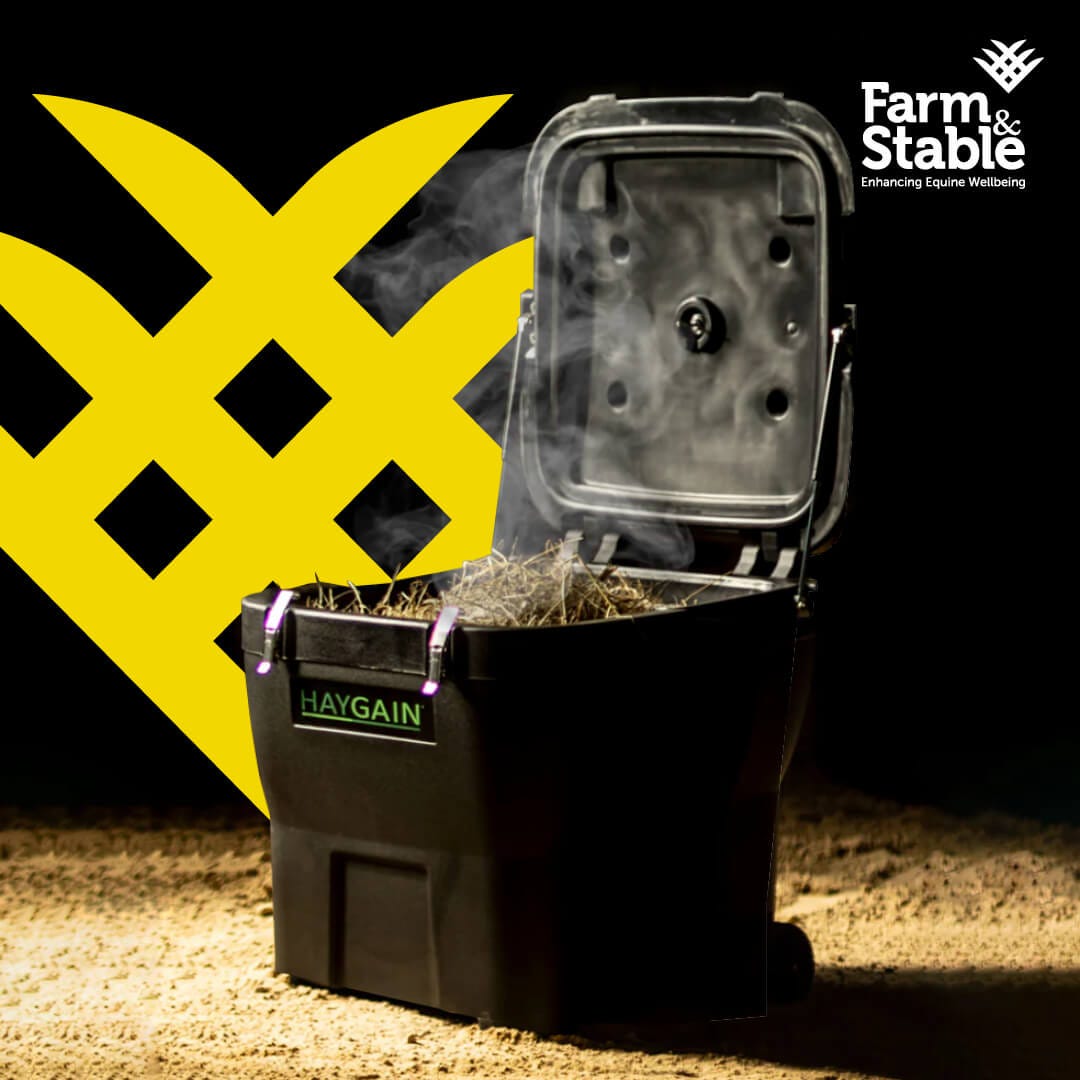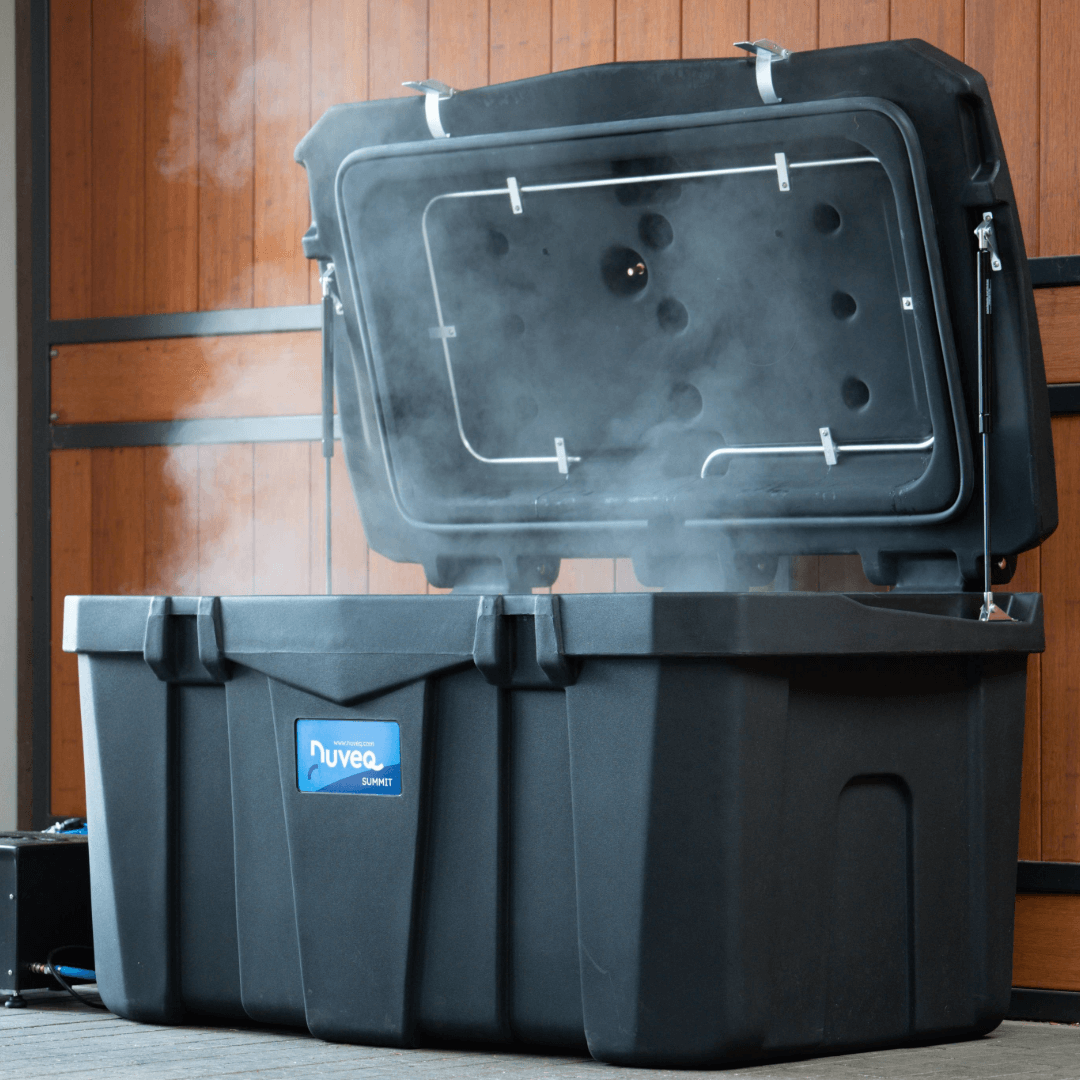
You may know that ideally, performance horses should have a good ‘topline’- but what exactly is it and why is it important?
Well, the topline is a group of muscles that (unsurprisingly) cover the top of your horse's back and neck and it is indeed very important. This is because this group of muscles support the vertebral column, the rider when they are in the saddle, and it facilitates correct movement and power.
Despite the obvious benefits that a good topline would give to both the horse and rider, topline is one of the most underdeveloped muscle groups in a high percentage of horses. This is often not due to the fault of the rider who fails to incorporate specific ‘topline’ building exercises into their training regimen, rather, the topline is notoriously hard to maintain and even harder to build. However, there are three key identified areas that, if not managed well, contribute to a poor topline. These include exercise, nutrition, and (perhaps surprisingly), gut health.
Proper nutrition in the horse is a huge debate and likely if you ask 10 different horse owners, veterinarians, or nutritionists, you will get 10 different answers. However, what is commonly agreed upon is that you can’t just add calories and expect the topline to grow- or at least grow in the right way. It may give the illusion of a more developed topline, but in reality, more calories without sufficient exercise and good gut health will just result in an accumulation of fat. You really need to fulfil the three key areas in order to build good topline, those being suitable nutrition (with the inclusion of good quality protein), proper exercise, and good gut health. So, let’s address these key points.
Nutrition for Topline
Amino acids, found in protein, are vital for muscle growth and topline development in horses. There are two types of amino acids: essential, which your horse must obtain through their diet as they cannot create them themselves, and non-essential, amino acids that the horse can make naturally inside their body. A good quality protein sauce will contain a higher proportion of essential amino acids than non-essential ones.
Most hays being fed are quite low in protein, with generally around a 10% protein content. While this may be sufficient for some horses, some horses will require more than just hay to stay healthy and at a good weight. A small change could be to feed alfalfa or mixed-grass mix hay as it has a higher average protein level of 19% or higher. However, almost always performance horses, or horses in any type of work, will need additional calories to provide sufficient protein to sustain their energy demands- this is often in the form of hard feed.
Some horses can benefit from a specific protein source being added to their diet, particularly if they are looking to build muscle quickly, they are growing, or they need to repair muscle after an injury or operation.
Maxi-Top Equine is an effective protein supplement used by equine athletes to help build muscle the topline of their horses. Of course, this doesn’t just target the topline, it helps strengthen and grow muscle strength in the whole horse, but it can be a real help when trying to build the hard-to-target areas such as the topline muscle group.
Maxi-Top Equine is pea protein based and packed full of branch chain amino acids, which is why it is an incredible supplement to develop and maintain muscle mass in horses in intense training and competition. It is also excellent for young growing horses, during periods of rehabilitation, and after surgery or injury.
Boehringer Ingelheim Equitop Myoplast is also a frequently used muscle builder for horses. Myoplast as it is often referred too is similar to Maxi-Top Equine. It is based on Algae powder for its source of protein (spirulina platensis) and also contains two energy sources (sugars) in the form of Saccharose and Glucose Syrup. This increases the calorific content and will not always be suitable for horses that require a zero sugar or low sugar diet.
It is important to remember, however, that muscles must be worked in order to grow, it isn’t enough to simply provide extra calories. Muscles grow through hypertrophy- a process that involves micro-tears within the muscle cells, and ultimately the rebuilding of these cells to make bigger, stronger muscles.
You should also be aware that your horse will need to take on more water if you increase the protein content of their diet. This is because your horse will have increased nitrogen levels as a by-product of amino acid metabolism. More water is therefore required to flush out the excess nitrogen. This will make your horse's urine more concentrated which may increase ammonia in the stable- something to bear in mind if you are supplementing with protein.
Exercising for Topline Growth
You could follow the best nutritional program and supplement with protein to provide all vital amino acids, BUT, if you do not challenge your horse's muscles they will not grow. Think of it from our (human) perspective- we couldn’t eat a bodybuilder's diet and expect to look like a bodybuilder without also putting in the work.
A muscle must be stimulated to grow, and not just once but continually. The level of intensity must also increase because the muscle will reach a point of adaptation which must be overcome in order to achieve continuing growth- gym goes call this process progressive overload. Another vital component of your exercise regimen has to be consistency. You could put a lot of effort into exercising your horse and produce a nice topline, but if you do not maintain a consistent level of exercise, the decrease in muscle stimulation will mean that a loss of muscle mass will occur.
Here are 4 effective exercises to build topline:
- Spiral in and out on the lunge- this will help your horse practice the correct flection by bending in the direction you are going, while also encouraging them to lift themselves up with the inside hindleg.
- Practice stepping under with the hindleg while in the saddle- groundwork should be a fundamental part of building topline. Continue to practice small circles. As your horse turns you should expect to see them step their hindleg forward and underneath their body. This will encourage them to lift up through the core and into the correct position in the back.
- Hill work- this is an excellent way to build topline. Riding up and down hills really engages the muscles in the hindquarters, the back and the abdominal muscles.
- Poll work- This can start as polls on the ground and be worked up to raised polls. This exercise is great for so many reasons. Poll work increases range of motion, engages the hindquarters, increases stride length and core stability, while it also improves balance, position and movement.
- Practice transitions and controlling speed with your leg- This exercise will help you ride more with your legs and seat rather than with your hands. By practising adjusting your speed within each gait, you’ll increase your horse’s adjustability and responsiveness. Try and encourage suppleness through the transitions rather than hollowness as this will really engage their hind quarters. If your horse has a week topline, they are more likely to pull themselves into a transition in a hollow position but keep practising, perseverance and patience are key!
These exercises are great because not only do they target muscles in the back, but they also stimulate the core. Your horse requires both opposing muscle groups for proper support of the spinal bony column.
Why Gut Health Matters for Topline
You may be thinking, what does gut health have to do with topline strength? Well…. Good gut health really underpins the health and the overall strength and well-being of a horse. Digestive health is vital as it directly affects many physiological processes including nutrient absorption, inflammation, and even behaviour.
The health of a horse's gut is largely determined by the condition of its microbiome- the population of bacteria that live inside the gastrointestinal tract of the horse. The digestive tract of a horse is large and relatively complex. It can be affected by many things including a change in turnout routine or grazing quality, changes in the amount of exercise, stressors, worm burden, antibiotics and more.
If you feel that you are providing adequate nutrition and maintaining a good exercise regime, yet you are not seeing the results you expect, it might be because your horse needs additional support to improve digestive health.
This topic is addressed in depth in another article: How to improve your horse's gut health?
The article explains how a horse's internal microbial communities directly affect their health, as well as sheds light on the different gut balancers and ways to improve digestive health.
How Long Does it Take to Build Topline?
While significant muscle growth doesn’t happen overnight, you may be pleased to hear that, as long as you apply these three pillars for growth properly, you may be able to see improvements in just a few weeks.
This is, however, dependent on the starting position of your horse. If your horse lacks general body condition and fitness, it may take 8 weeks or more to see a strong topline develop. On the other hand, if your horse is already in a fairly good condition, you could see subtle to significant improvements in topline strength in as little as 2 weeks. Using a supplement such as Maxi-Top Equine or Muscle-up (rice bran-based formula) will increase that process dramatically and can ensure your horse is maintained at peak levels no matter what the discipline they participate in or the level of competition. Combining training and supplementation will not only build topline, but also enhance the overall wellbeing of the horse.
The great thing about horses is often the more you put in the more you get out. Therefore, with consistent effort, you are very likely to see promising results!
If you have any questions about adding nutritional support to your horse's diet, please do not hesitate to email us at sales@farmstable.com, give us a call on 01730815800, or you can message us on social media– we are always happy to help.
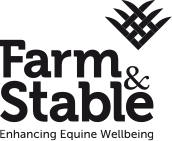

 Forgotten your password?
Forgotten your password?  Free Delivery on all orders over £95+VAT
Free Delivery on all orders over £95+VAT
